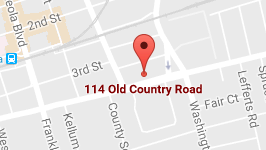Sometimes, most people may use terms like theft, robbery, and burglary interchangeably. However, each has a distinct definition describing how the crime was conducted, what type of crime it is, and the penalties for each.
One of the reasons you need to recognize the differences between theft and burglary in Long Island is because each will be prosecuted differently. For instance, the penalties for a burglary charge are higher than a theft charge. You may need a Long Island criminal justice attorney who can defend you and ensure you’re not charged wrongly.
Let’s look at some differences between theft and burglary in Long Island.
What Is Theft in Long Island?
Theft is one of the most commonly committed crimes. Another name for this crime is “larceny.” Legally speaking, it involves taking someone else’s belongings or money without that person’s consent and with the intention of depriving the owner of its use.
The owner may not know about the theft until after the act is committed. Also, theft does not involve the use of force or the threat of force. A theft conviction can destroy your career and even your personal life. You should fight these charges with the help of a skilled Long Island theft and burglary attorney.
Theft has three elements, namely;
- Property – Theft will involve taking of someone’s tangible or intangible property.
- Wrongful – the thief acts against the interests of the owner. If someone takes something with the owner’s permission, it won’t be theft. But if you are given property but with no intention of returning it, then it would be theft.
- Deprive – the thief must have the intent of permanently depriving the owner of the property.
What Is Burglary in Long Island?
New York state defines burglary in two ways: a) gaining entry into a building with a goal of committing a crime b) remaining on the property with the intention to commit a crime. A burglary will often be paired with physical breaking and entering a building. But still, it’s possible to remain in a property with the goal of committing a crime without necessarily breaking and entering.
The property can be a house, vehicle, temporary dwelling, commercial building, place of worship, warehouse, trailer, or tent. Even if you believe you did nothing wrong, it’s critical to speak to a skilled criminal defense attorney near you. Your attorney will look at the elements of the burglary crime and advise you accordingly.
What Are Primary Types of Larceny New York?
New York state law lists eight different types of theft or larceny. You can fight any of them with the help of a theft and burglary attorney in Long Island. They are:
- Trespassory – taking someone else’s property without their consent
- Trick – use of fraudulent misrepresentations or statements to take another person’s assets or property
- Embezzlement – the perpetrator uses his/her power to convert someone else’s property into their own without the intention of returning it, e.g., among employees.
- False pretense – this is obtaining assets or property using intentional false statements. These statements are meant to mislead other people.
- Theft by extortion
- Theft by issuing a kited check
- Theft by giving false promises
- Theft by possessing lost assets or property
What Are the Penalties of Theft in Long Island?
It’s important to note that theft or larceny charges are divided into petit larceny and grand larceny.
Petit larceny is the lowest theft charge in New York and involves the theft of goods valued at no more than $1,000. It is a Class A misdemeanor that is punishable by a $1,000 fine and jail time of up to 364 days.
Grand larceny is more serious than petit larceny and is further divided into four.
- Fourth degree grand larceny is a Class E felony, and its penalties are four years in prison and a $5,000 fine.
- Third degree grand larceny is a Class D felony and carries up to seven years in prison and fines.
- Second degree grand larceny is a Class C felony and is punishable by up to fifteen years in state prison with extra fines.
- First degree grand larceny is the most serious theft charge in New York. It is a Class B felony with a prison sentence of up to 25 years plus fines. These cases involve the theft of property valued above $1,000,000. With such harsh consequences, you should protect your rights and defend yourself by having a qualified Long Island theft defense lawyer who can build a strong defense strategy for you.
What Are the Penalties of Burglary in Long Island?
Burglaries in New York are considered felonies. There are three degrees of burglaries in New York. Below is a list of potential penalties:
- First degree burglary: this is a Class B felony carrying 1-25 years in prison and a $5,000 fine.
- Second degree burglary: this is a Class C felony with a potential 1-15 years in prison with a potential $5,000 fine.
- Third degree burglary: it is a Class D felony carrying 1-7 years in prison and a potential fine of $5,000.
Premier Criminal Defense Law Firm in Long Island
If you or someone you love is facing charges of taking another party’s property, you need a strong defense. The prosecution can quickly elevate a simple theft charge to a burglary, which has more penalties.
Take immediate action and get yourself an effective defense. It will be contingent on building the best defense strategy in Long Island. The skilled theft and burglary attorneys at The Mirsky Law Firm are experienced, aggressive, and ready to help you. Whether you are facing any larceny charge or burglary, we can help you. Call us to book a free consultation to discuss your case in detail.














Comments are closed.